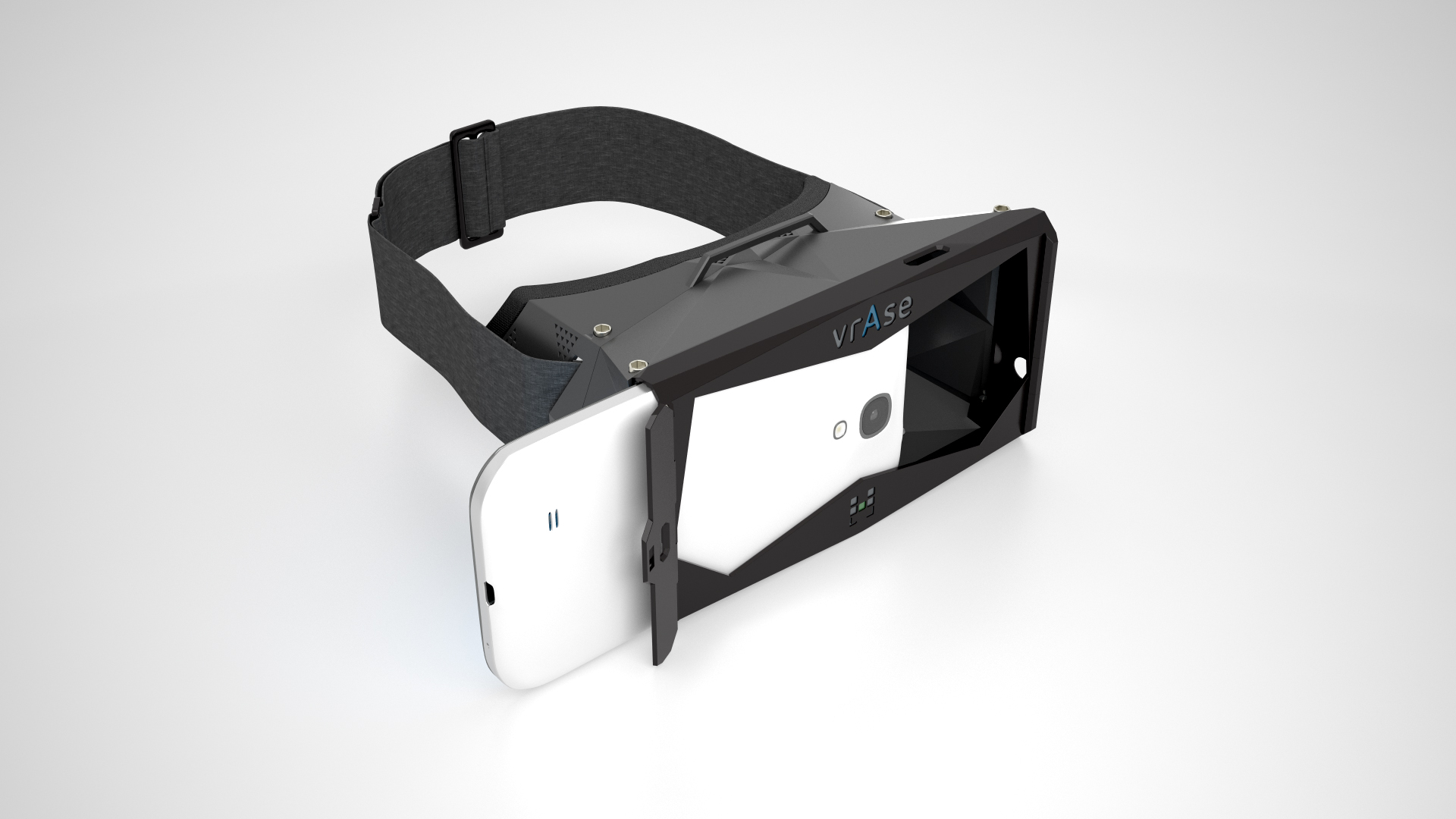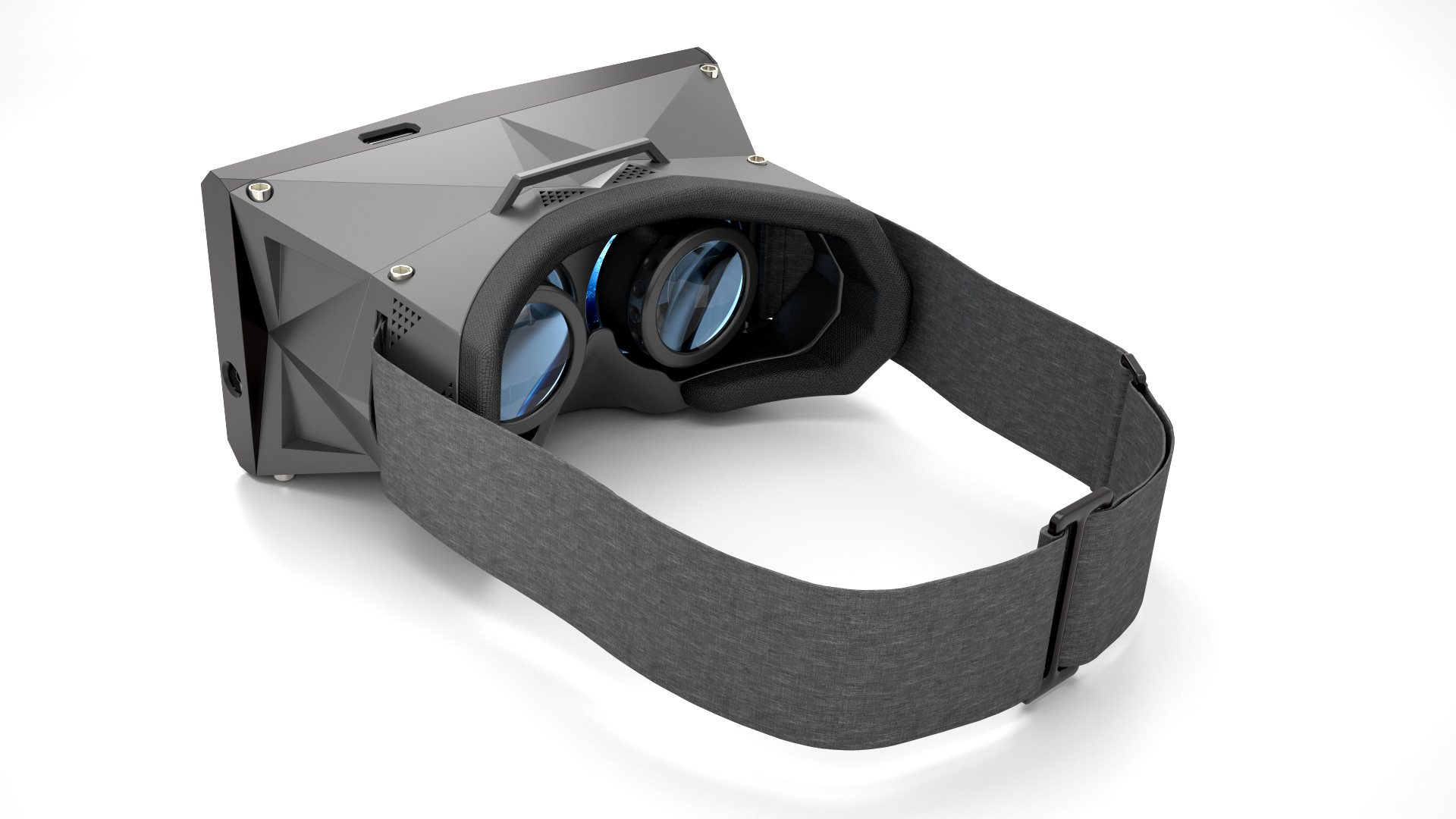The Past, Present, And Future Of VR And AR: The Pioneers Speak
vrAse
vrAse may not make as much noise as some of the other guys in the VR space, but that doesn't mean there isn't a lot to be excited about. Instead of integrating its own display technologies into the hardware, vrAse has cleverly decided to leave that up to smartphone companies and their billions of dollars in R&D. Instead, vrAse is a joint software and hardware solution that utilizes a smartphone that integrates into a headset, which has optics inside that present a stereo image to the user. Why reinvent the full HD screen when there's one already in your pocket?
Miguel Schiaffino Tienda, CEO of the company behind vrAse, answered Tom's Hardware's questions.
Tom's Hardware: Is your technology based on AR or VR, and why?
vrAse: vrAse uses the smartphone for generating immersive and "perfect 3D" AR and VR experiences. Smartphones have everything we need: high definition screens, sensors, batteries for wireless operation, etc. Augmented Reality solutions are also possible due to the fact that smartphones incorporate powerful frontal cameras, which can be used for those duties in conjunction with the on-board CPU.
Tom's Hardware: When will we see mass adoption of VR and AR technology (defined as more than one million customers)?
vrAse: We think the next few years will be very interesting for these markets, as big companies begin to understand that using the smartphone for VR and AR is the only way to go (for mass adoption). Big Data is coming fast to the Big Public, and navigating the future in a complex society will require more often devices that enable immersive experiences and the simplification of our surroundings. Think 2015 for big numbers.
Tom's Hardware: What are the technical hurdles still standing in the way?
Get Tom's Hardware's best news and in-depth reviews, straight to your inbox.
vrAse: There are two main factors: hardware and software. Each of those have also two subcategories: density and quality. On the hardware front, batteries are a big limiting factor, and density in the CPU will advance slower as Moore's Law starts showing its age. We'll see more advances in the quality of the designs in the next few years. Some "miracle" materials and techniques, such as graphene and photonics, may play an important role, but not in the short term.
Software density will advance really fast in the first years, and we'll start seeing quality solutions for problems (such as positioning) when some advances in the hardware start to get mass adoption (particularly high quality accelerometers, interfaces, etc).
Tom's Hardware: What are the non-technical hurdles standing in the way?
vrAse: New technologies are always approached with caution by the Big Public. There are many things that companies will need to navigate before people start adopting these devices by the millions. Two of the biggest are initial adoption (how crazy one looks when wearing a new device so near your face) and privacy (a big issue when you have a device that can harvest such a big amount of information about the user and its surroundings).
Tom's Hardware: What steps are needed to remove those hurdles?
vrAse: Hardware and software limitations will be progressively removed by the investment of their respective industries. Social hurdles are not so easy to manage because there are many factors in play: people learn fast, economic recession will hit harder, demographics, etc. Building incredible, memorable and trustable experiences is paramount, because those will drive younger people first. As for privacy, people need to feel comfortable about using their devices, knowing that their data is not used by big corporations. People want more privacy in personal data and more open source in social services, not the other way around. People just get along with some "free" services until they understand that "free" is not.
Tom's Hardware: What is your company doing specifically and technically to remove those hurdles?
vrAse: Remove is a verb, therefore needs energy (capital) to be put into action. Some of those hurdles are very big, so the first thing we need is the help from a very big ally, the smartphone industry!
We've understood since the beginning that the smartphone industry is such a beast, that it's impossible to be near its range and not be engulfed by the huge amounts of R&D the big players pour each year into the sector. Think about what happened to GPS, MP3, PDA, cameras, and more recently the stagnation in PC sales. The format war is over, it just happened so fast that many players did not see it happen. That´s a fact, just look at the numbers.
So knowing what happened, we created a device that helps to align the smartphone industry with the AR and VR markets, simply and powerfully. Now it's just a matter of time. Smartphones will also be dominant in these two sectors. There is no turning back.
The second thing we've done for mass adoption is to make vrAse affordable, and using the smartphone for the heavy lifting allows us to do that.
The third thing is that we always try to do our best and team with the best. There are some awesome businesses out there that have some really cool tech, so you have to know how to work with others.
Finally, the general concept of vrAse is to be a bridge to AR and VR. The majority of people get motion sick when extreme immersive solutions are used (good for marketing, but not much for real-world usage), so we dialed down the immersion in favor of a higher quality image, more prolonged use and no need to use a GPU for shaders.
Tom's Hardware: How will VR and AR change the gaming ecosystems in the future (PCs and components, consoles, controllers, and the games themselves)?
vrAse: PC's and consoles will be really small in the coming decade compared to the smartphone industry, and the only thing that will truly limit the smartphone is the access to more energy density. As such, PCs and consoles will probably be relegated to content servers via streaming. With very low latency WiFi, 4G and the cloud, you can have access to almost unlimited graphic details in a device that is immersive, affordable and wireless!
It will be hard to justify buying a PC or console when you'll be able to have a much better experience with a device like vrAse for a fraction of the cost. It's not that they'll cease to exist (at least in the short term), it's that for the vast majority of situations they won't be needed.
Gaming: AR gaming will change everything (look for example what the 13th lab guys are doing). Controllers: everything around us will be made a controller (think Thalmic and Kinect hybrids).
Tom's Hardware: How will VR and AR change the world outside of gaming? Give us the most remarkable, life-changing examples you expect to happen.
vrAse: AR will also change everything outside gaming. It'll be so huge many will be (again) surprised! It's really the final frontier for the interpretation of anything that has something to do with people and their surroundings; and that's almost everything (not counting spiritual matters). People will be able to make decisions in less time (prediction will come true in real time via Big Data). Learning and teleworking will change societies also.
-
icepick314 would Virtual Boy from Nintendo count as VR tech?Reply
it's missing in the article's timeline...
also an arcade game Time Traveler that had "holographic" screen... -
Cazalan I think they're wasting too much time on the motion capturing aspect. Just give me a headset that looks better than a 30" monitor and I'm sold.Reply -
Vlad Rose With the Virtual Boy, I would call it VR tech as it uses similar technology that used in the VR gear that is coming out. With Time Traveler and Holosseum, I would say no. What they used was a single 2D screen that was projected to a curved mirror to create a false reality of the image 'sticking out'. It is more comparable to 3D movies than Virtual Reality.Reply -
clonazepam The Vuzix seems pretty cool. We've already accepted bluetooth headsets and its a very similar look. I hope they all account for the fact that some people are right-handed and left-eye dominant or other way around, as well as color blind or red / green deficient.Reply
I think the Vuxio would be the most useful in everyday life, while obviously Oculus or Morpheus being the most fun. -
Shankovich Morpheus looks cool but it just can't compete with the rift when hooked up to the PS4; it just doesn't have the graphical power to run above 1080P games with acceptable level of detail, effects, etc. especially when the frame rate will need to be at 60fps or more to reduce nauseating effects. On PC, the rift has better sensors (geomagnetic) and is better able to take care of movement lag.Reply -
CaedenV @CazalanReply
Agreed. I am all for VR to hit when it is really ready, but until then I would be extremely happy with a high resolution headset to use as an immersive display. I don't want to have to crane my neck and change my body's orientation when gaming. I still want a keyboard/mouse or controller as input and be able to sit back on the couch and just play a game. I have a nice big yard to work on if I want something active to do... when I am gaming I want to get into it, but with the least amount of physical effort possible. -
Henderburn The VR timeline should include the release of "Snow Crash," the novel that inspired John Carmack and Michael Abrash to make Quake and build the foundations for VRReply -
WyomingKnott I'm still waiting for a decent eyeglass-size display so I can read a book while the dentist pokes at my teeth. Seriously, we don't have even the basic display element available commercially?Reply -
Cybolic Vuzix examples are probably the worst I've ever heard: "having a sales associate be able to answer your questions" and "see exactly where your veins are so they only stick you once with the needle to get the blood", yeah, they are supposed to already be able to do that without wearing special glasses; it's literally what they're being paid for.Reply



